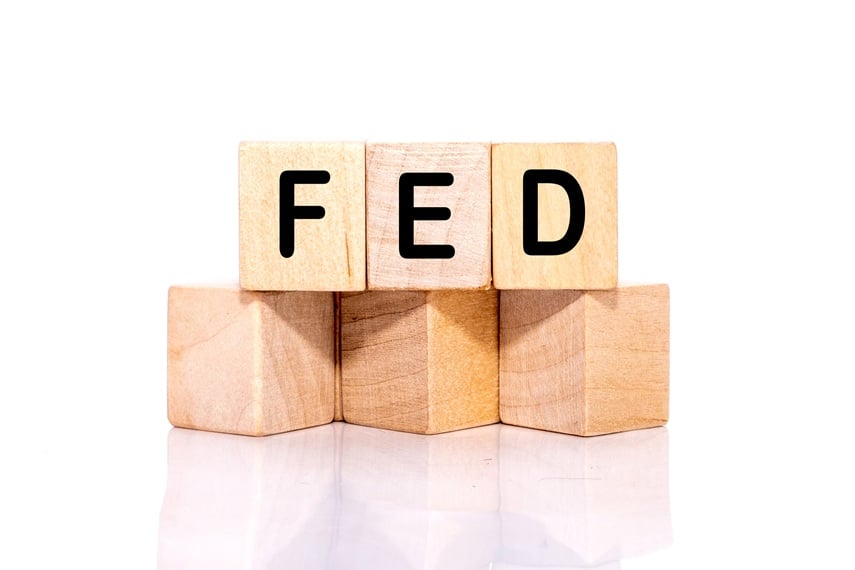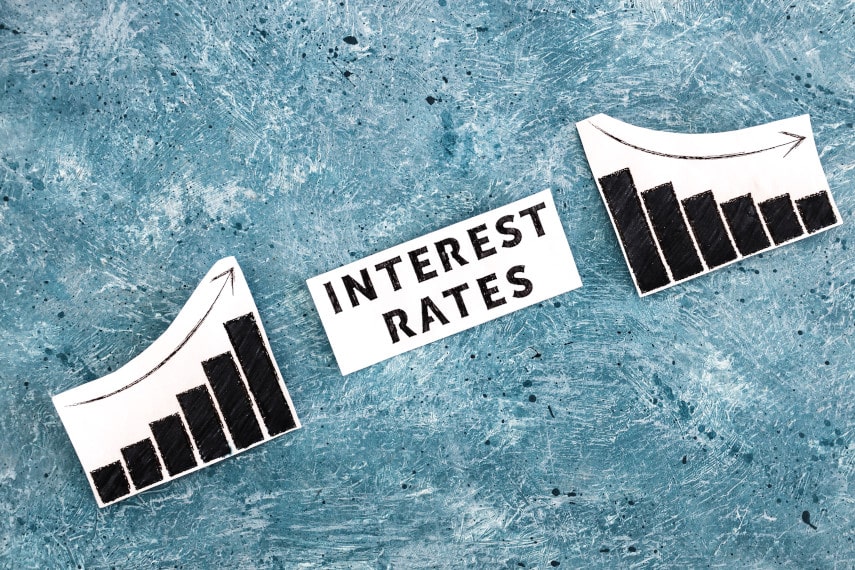
While most of the country is focused on the Federal Reserve’s monetary policy as it pertains to interest rates, fewer people are focused on other aspects of the Fed’s monetary policy. Among the most important of those is the Fed’s stance regarding its balance sheet.
The Fed’s balance sheet has been massively bloated since 2008, when the Fed first resorted to quantitative easing (QE) to buoy the US financial system in the aftermath of the financial crisis. And despite various attempts over the years to pull back at least somewhat, the Fed’s balance sheet is still far higher than it would have been had QE never been a thing.
Had the Fed never engaged in QE, its balance sheet today would likely be around $1.5 trillion. Instead, it’s nearly $7.4 trillion, about five times higher than it should be.
Perhaps even more concerning is the makeup of the Fed’s balance sheet, which largely limits how much it can normalize monetary policy. But with interest rates higher than they’ve been since pre-2008, and those rates impacting the economy, there is a push in some corners in Washington for the Fed to halt its balance sheet contraction.
Can the Fed really do that? And what might the impacts be if it can’t?
What the Fed Said It Would Do
The Fed stated in May 2022 that it would begin its monetary tightening in June 2022, starting by decreasing its Treasury holdings by up to $30 billion per month and its mortgage-backed securities by up to $17.5 trillion, with those numbers increasing to $60 billion and $35 billion respectively after three months.
That means that the Fed could have reduced its balance sheet by about $1.95 trillion since then. Instead, the Fed’s balance sheet has decreased by only about $1.48 trillion.
That’s still a significant amount of money, but compared to where the Fed needs to get back to in order to normalize its balance sheet, it’s still a far ways away.
The Fed is facing two problems that are hampering its ability to decrease its balance sheet any further.
The first is that the Fed has chosen primarily to allow its holdings of Treasury securities to run off or mature rather than to sell them. The second is that the Fed is hampered significantly by the amount of mortgage-backed securities (MBS) it owns, and can’t sell them all off without negatively impacting the housing market.
While the Fed has reduced its Treasury holdings by about $1.2 trillion of the $1.23 trillion it could have, it has only reduced its MBS holdings by about $319 billion, versus the $718 billion it could have.
The Fed is the whale in the MBS market, still holding about 20% of all outstanding MBS on its balance sheet. And selling off all those MBS would negatively impact the housing market.
MBS issuance has already slowed significantly due to the Fed’s raising of the federal funds rate. Rising mortgage rates have suppressed demand for houses, thus there are fewer mortgages able to be securitized.
Into that market the Fed is supposed to be selling off its own holdings of MBS, which just isn’t feasible. If the Fed were to max out its MBS drawdown, there’s a good likelihood that its MBS sales would depress existing MBS issuance and drive down prices.
Monthly MBS trading volume today is about $74 billion, so $35 billion a month is still close to 50% of monthly MBS volume. Even the small amount the Fed is selling off is still close to 20% of monthly MBS volume, making the Fed’s balance sheet drawdown a major mover of markets.
Will the Fed Ever Normalize?
Even the Fed’s roughly $4.6 trillion of Treasury securities is over 16% of total debt held by the public. The Fed can’t get rid of it all quickly without impacting markets, which could sink prices and send interest rates soaring.
The problem with trying to normalize monetary policy is that, even if the Fed were intent on getting back to a normal-sized balance sheet, it would take years to do at current rates. If it’s taken nearly two years for the Fed to run a mere $1.5 trillion off its balance sheet, it could take over eight more years to get back to normal.
The odds of a major economic crisis happening within the next eight years are extremely high, which would mean that the likelihood of the Fed starting a new round of QE is also high. And that means that the Fed will at some point bring its balance sheet tightening to an end, and will very likely begin to expand it again.
As we saw the last time around, the Fed’s rapid balance sheet expansion resulted in the highest inflation in over 40 years. And if the Fed has to short-circuit its tightening and return to balance sheet expansion, it could end up bringing inflation back with a vengeance.
As it is already, we’re still suffering the effects of that 2020 expansion, as inflation hasn’t fully returned to the Fed’s 2% target, despite rate hikes and balance sheet tightening. And any further rise in inflation could only further harm American households who have already suffered inflation’s pernicious effects.
Protection against inflation is one reason so many Americans have turned to gold to help protect their assets. They don’t want to see the wealth they’ve worked so hard to accumulate get devalued through persistent inflation.
Gold has been trusted as a safe haven and inflation hedge for centuries, and it continues to perform that role during tough economic times. Today gold has hit record highs and continues to climb, as increasing safe haven demand is driving up the gold price.
If you haven’t already thought about how gold could play a role in protecting your finances, now is the time to start thinking about it. With a potential recession on the way, wealth preservation is becoming more and more important to Americans who have already had to suffer from higher inflation.
Goldco has helped thousands of Americans benefit from owning gold, with over $2 billion in precious metals placements and over 5,000 5-star reviews. Whether you’re interested in starting a gold IRA or just interesting in buying gold coins and bars to store at home, we have gold purchase options available for everyone.
Don’t let your hard-earned savings fall victim to inflation or recession. Call Goldco today to learn more about how to safeguard your financial well-being with gold.





